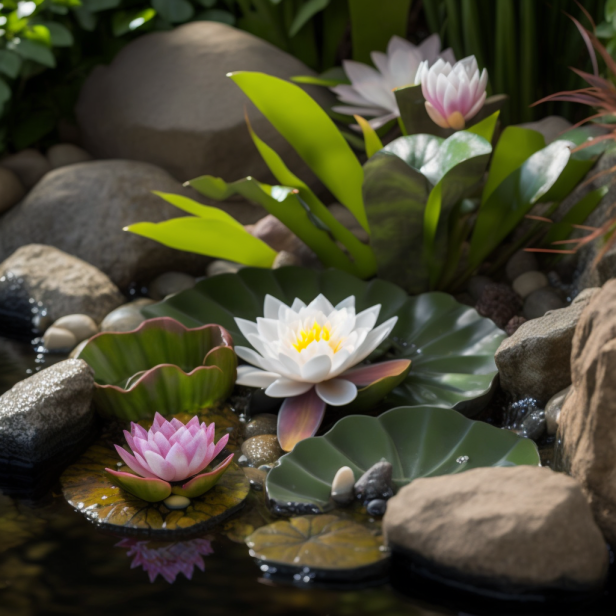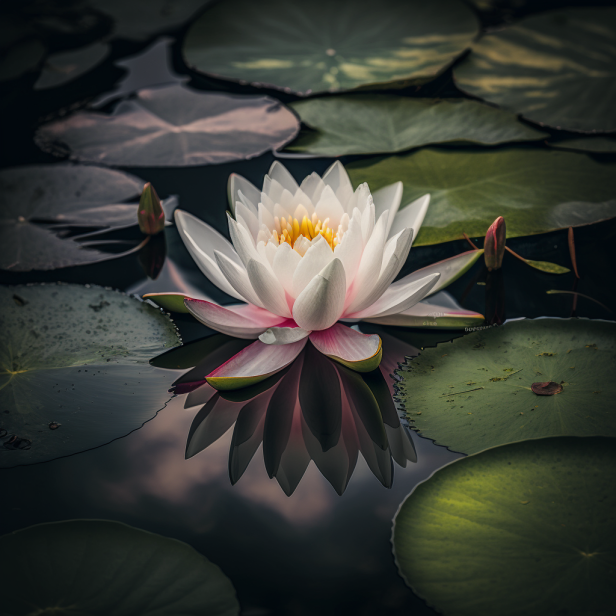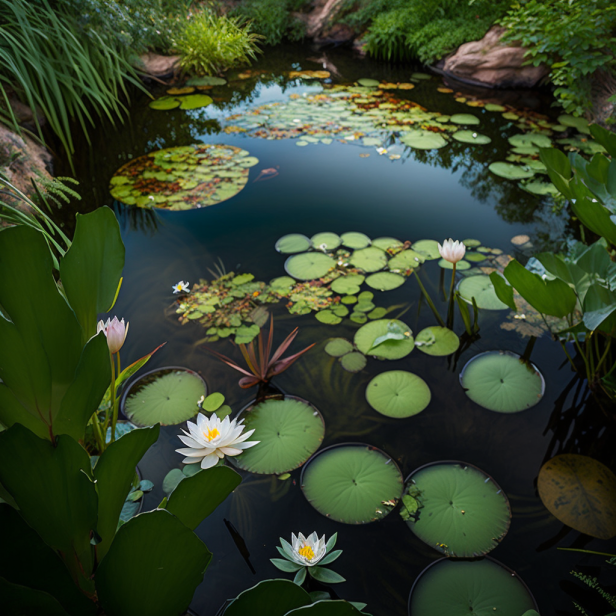Water or aquatic gardening has become increasingly popular in recent years to add beauty, interest, and diversity to any outdoor space. Water garden plants can transform a boring pond, pool or other water feature into a stunning oasis that attracts wildlife improves water quality and reduces maintenance. In this article, we will introduce you to the 10 best water garden plants for any water feature, provide tips on choosing and growing beautiful plants, and offer advice on caring for and maintaining them.

Benefits of Water Gardening
Many benefits of water gardening make it an attractive option for gardening enthusiasts and nature lovers. First, water garden plants provide a unique and eye-catching element to any outdoor space. They come in various colors, shapes, and sizes that can add interest and depth to your water feature. Water garden plants can also create natural habitats for different animals and insects, such as fish, birds, and butterflies.
Second, water garden plants can improve quality by acting as natural filters. They absorb excess nutrients and chemicals that can harm aquatic life and help keep the water clear and healthy. Water garden plants also reduce erosion by stabilizing the soil around your water feature and preventing runoff.
Finally, water gardening is a low-maintenance option for people who want to enjoy a beautiful garden without spending too much time and effort on upkeep. Once established, water garden plants require minimal care and can thrive in various conditions.
How to Choose and Grow Beautiful Water Garden Plants
Choosing the right water garden plants for your climate and location is essential for a successful and beautiful aquatic garden. Here are some tips to help you get started:
- Consider the size of your water feature: Different water garden plants require different amounts of space to grow and thrive. Make sure to choose plants appropriate for the size of your pond, pool, or other water feature.
- Think about sunlight and shade: Some water garden plants, such as water lilies, require full sun to bloom, while others, such as water iris, prefer partial shade. Make sure to choose plants that match the amount of sunlight your water feature receives.
- Check your water quality: Some water garden plants, such as water hyacinth, are very effective at removing excess nutrients and chemicals from the water. However, these plants may be optional if your water is already very clean.
- Consider your climate: Some water garden plants, such as lotus, require warm temperatures and may not be suitable for colder climates. Make sure to choose appropriate plants for your local weather and zone.
Once you have selected your water garden plants, you must know how to grow them successfully. Most water garden plants prefer to be planted in a soil-based medium, such as aquatic plant soil or clay, rather than regular garden soil. Make sure to follow the planting instructions carefully and to keep the soil moist.
Water garden plants also require regular fertilization to thrive. You can use a slow-release fertilizer specifically designed for aquatic plants or a liquid fertilizer you add to the water. Be careful not to over-fertilize, as this can harm the plants and the marine ecosystem.
How to Care for and Maintain Your Water Garden Plants
Caring for and maintaining your water garden plants is key to ensuring they remain healthy and beautiful. Here are some tips to help you keep your water garden plants in top condition:
- Monitor water quality: Regularly test the water quality of your water feature to ensure that it is healthy and balanced. If you notice any problems, such as excessive algae growth or discolored water, take steps to correct them.
- Control pests and diseases: Water Garden plants are susceptible to various problems and conditions, such as aphids, snails, and fungal infections. Regularly inspect your plants for signs of damage or infestation, and take appropriate measures to control them, such as using insecticidal soap or removing affected leaves.
- Prune and thin out plants: Overcrowded plants can cause poor growth and reduce the oxygen levels in the water. Regularly prune and thin out your water garden plants to ensure that they have enough space to grow and breathe.
- Winterize your plants: Depending on your climate, you may need to take steps to protect your water garden plants from the cold during the winter months. This may involve removing them from the water, storing them in a cool, dark place, or covering them with a protective layer of mulch.
Enjoy your water garden: One of the best things about water gardening is sitting back and enjoying your beautiful, peaceful outdoor space. Spend some time relaxing by your water feature, observing the plants and wildlife, and feeling the calming effects of the water.

10 Best Water Garden Plants for Any Water Feature
Now that you know how to choose, grow, and care for water garden plants, let’s take a look at 10 of the best water garden plants for any water feature:
- Water lilies: These classic water garden plants come in various colors and sizes and are known for their beautiful and fragrant blooms. They prefer full sun and can thrive in still or moving water.
- Lotus: These stunning water garden plants are known for their large and showy flowers, which come in a range of colors from white to pink to red. They prefer warm temperatures and still water.
- Water hyacinth: These floating water garden plants have beautiful lavender-blue flowers and are excellent at absorbing excess nutrients from the water. They prefer full sun and warm temperatures.
- Water iris: These elegant water garden plants have long, sword-shaped leaves and delicate blue or yellow flowers. They prefer partial shade and can tolerate a range of water depths.
- Pickerelweed: These vibrant water garden plants have striking spikes of purple-blue flowers and can tolerate a range of water depths. They prefer full sun and moist soil.
- Cattails: These tall and graceful water garden plants have long, cylindrical leaves and brown, sausage-shaped flower spikes. They prefer full sun and can tolerate a range of water depths.
- Taro: These exotic water garden plants have large, heart-shaped leaves in various colors, from green to purple to black. They prefer full sun and can tolerate a range of water depths.
- Water lettuce: These floating water garden plants have delicate, green leaves that resemble lettuce and can help control algae growth. They prefer full sun and warm temperatures.
- Water hibiscus: These tropical water garden plants have large, showy flowers in various colors, from red to pink to white. They prefer full sun and warm temperatures.
- Water poppy: These cheery garden plants have bright yellow or orange flowers and can tolerate a range of water depths. They prefer full sun and moist soil.
Conclusion
Water gardening is a wonderful and rewarding way to enhance outdoor space and connect with nature. By choosing the right water garden plants for your climate and location and following the tips and advice in this article, you can create a stunning and thriving aquatic garden that will provide beauty, interest, and benefits for years to come. So go ahead and dive into the world of water gardening – you won’t regret it!

